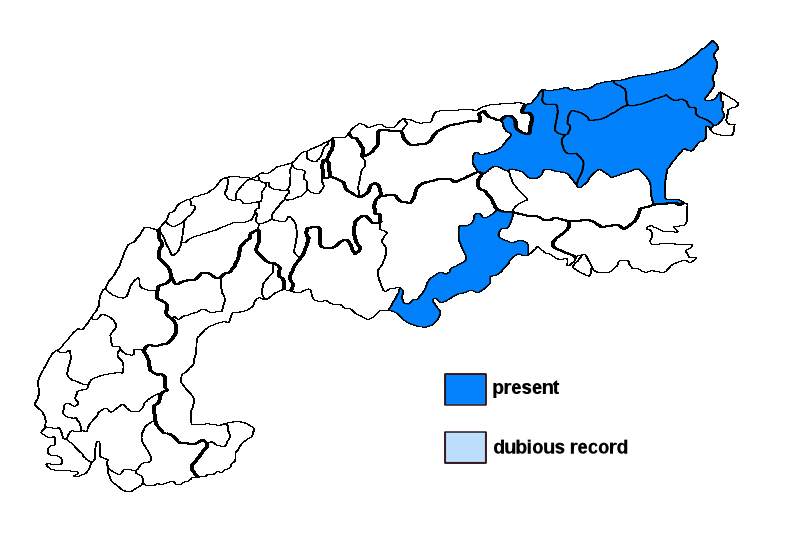Julella fallaciosa (Arnold) R.C. Harris
Syn.: Polyblastia fallaciosa Arnold, Polyblastiopsis betularia (Nyl.) Zahlbr., Polyblastiopsis fallaciosa (Arnold) Zahlbr., Polyblastiopsis fallacissima (Stizenb. ex Nyl.) Zahlbr., Sporodictyon fallaciosum Stizenb. ex Arnold nom.illeg.
Non- or doubtfully lichenised.
Substrate: bark
Altitudinal range: from the submediterranean/colline belt (potential vegetation: mixed deciduous forests dominated by Quercus and Carpinus) to the montane belt (potential vegetation: deciduous forests dominated by Fagus sylvatica and closed coniferous forests with Picea abies)
Note: a probably non-lichenised species with black, hemispherical to somewhat elongated perithecioid ascomata, the wall in upper half clypeus-like, bluish-black to violet-brown, fissitunicate, 8-spored asci, distinct interascal filaments, and hyaline irregularly submuriform to muriform ascospores (17-23 × 7-9 µm) with 4-6 transversal septa and 1-2 longitudinal septa; although the ascomata on the white Betula bark are quite conspicuous, records are still few, but the species was probably overlooked.
Austria: Salzburg; Steiermark; Oberösterreich; Niederösterreich (incl. Wien); Italy: Veneto;





